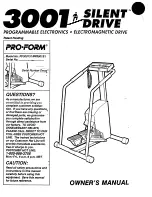
13
SETTING THE TENSION RELEASE
The tension release is set properly
so it begins to function when the
presser foot has been raised 1/8"
(3.2mm) from the throat plate sur-
face and the tension disc is entirely
released when the presser foot
reaches its highest position.
Loosen screw (A, Fig.14) and ad-
just tension disc separator (B) up
or down as required so all needle
tension discs (C) will release at the
proper time. Tighten screw (A)
SETTING THE STITCH LENGTH
This machine is designed to sew 7 to 14 stitches per inch. The
normal factory setting is 12 stitches per inch. If the current stitch
length has to be changed loosen locknut (A, Fig. 15) at the end of
the mainshaft (it has a left-hand thread). Turn screw (B) clockwise
to shorten the stitch or counter clockwise to lengthen the stitch.
Tighten nut (A) and torque to 55 in. lbs. (6.2Nm).
NOTE:
If the stitch length is changed the puller stitch length
must be changed also.
TIMING THE PULLER
The puller must be timed so it begins to
feed material to the rear at the same time
the feed dog feeds material to the puller.
Remove the crank chamber cover and
rotate the handwheel in operating direc-
tion until the needles are at the top of
their stroke. At this time screw (A, Fig.
16) on puller drive eccentric (B) should
be facing the 3 o’clock position (toward
the rear) and screw (C) should be facing
the 6 o’clock position (straight down). If
adjustment is necessary, turn the
handwheel in operating direction until
screw (C) is accessible


































